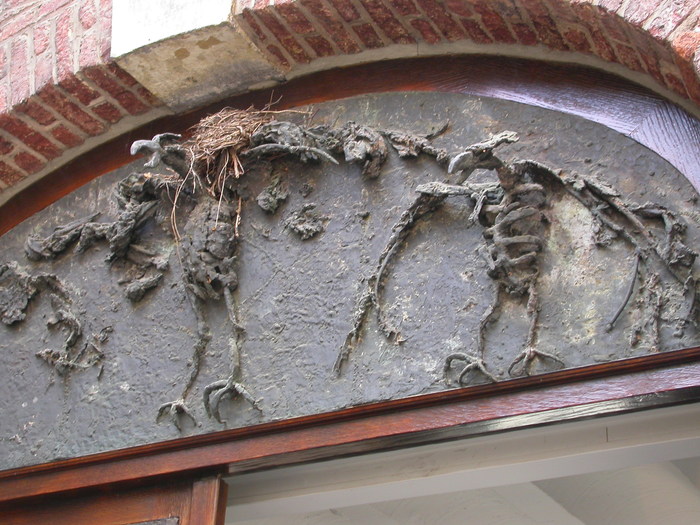
The first impressive thing about the Natuurhistorisch museum is the door. The birds nesting among the sculpted skeletons just adds to the effect.
The next weekend we went to Maastricht, to see a display at the Natuurhistorisch museum on homosexuality and bisexuality in animals. I didn't quite know what to expect from this exhibit... taxidermied critters posed in compromising positions? Hushed journal entries from Darwin, Linnaeus, and Cuvier documenting these peculiar behaviors? It turns out the exhibit was rather small, and mostly consisted of signs announcing facts such as, "Compared to other primates, bisexuality in humans is neither particularly common nor particularly uncommon." Great, but among which primates is it mnore common, and which is it less? What social function does it seem to serve? What are they counting as bisexuality? With a few exceptions the exhibit was interesting but vague, making broad statements about groups of animals rather than giving specific cases. The exhibit can be broadly summarized: bisexuality is quite common among intelligent, social species such as canids, cetaceans, primates, and birds. Homosexuality is common among many species, particularly birds, and in some cases homosexual pairs (who do breed with femaies to get eggs, but then the female leaves and the male pair care for the young) are actually more successful than the male/female pairs in the same area. The most detailed information in the exhibit was in this sign: it is graphic; if you have delicate sensibilities, read it at your own risk.
We also saw the rest of the Natuurhistorisch museum and the town grotto, a disused mine turned into an art exhibit, both of which were much more photogenic.

The first impressive thing about the Natuurhistorisch museum is the door. The birds nesting among the sculpted skeletons just adds to the effect.
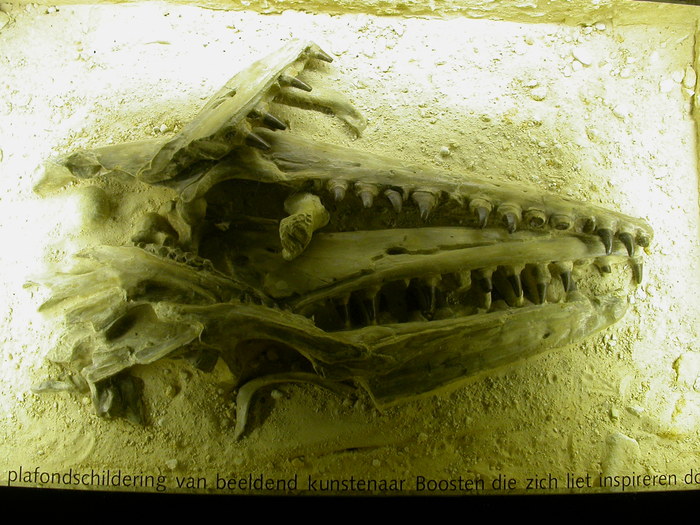
The area's claim to fame is that it was the site of the discovery of the first Mosasaur skull in 1778. However, this skull was nicked by the French. This is a copy of the skull, provided for the museum by France. Everyone eventually agreed that this was better than trying to sort out what stuff had been stolen from whose country and give it back to its original owners (for starters, Italy would probably sink if all the tonnage of statuary that has been removed from Roman ruins were returned). The discovery of the skull precipitated an important turning point in thinking about biology; it was the first clear evidence of an animal that no longer lived, and introduced the concept of extinction to Enlightenment-era biologists.
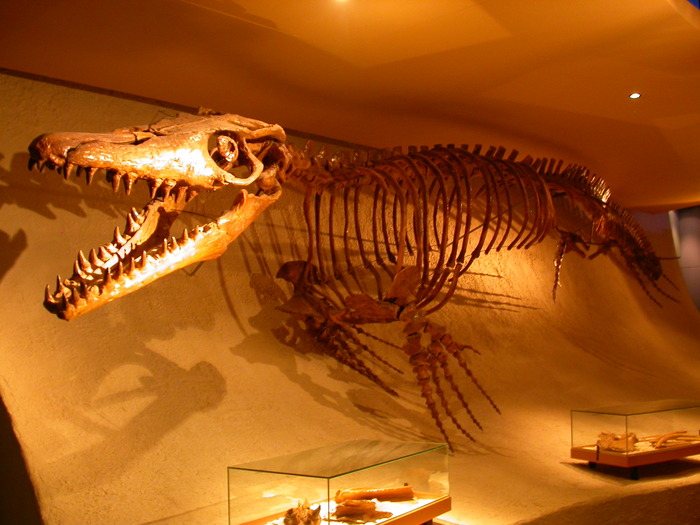
Two hundred and twenty years later, the Dutch finally had their day: the same mines yeilded a complete Mosasaur skeleton. This one stayed in the Netherlands.
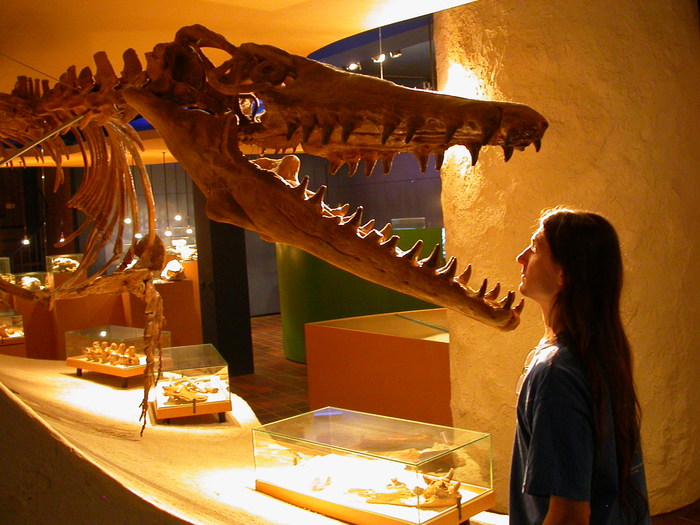
Mosasaurs were a group of marine reptiles that lived at the end of the Cretaceous (a period named the Maastrichtian in honor of this find). Tyrannosaurus rex ruled the land, flowering plants were just starting to spread, and bees had just appeared. The sea level was high, and Mosasaurs inhabited shallow inland seas that covered much of the continents. Plesiosaurs inhabited the oceans, pterosaurs flew in the air. But this was 65 million years ago: the Earth was on the brink of a mass extinction: and the mosasaurs died with the rest.
Mosasaurs are a group of marine reptiles that include 27 genera. The smallest are the Carinodens, at only 3.5 meters long (about the size of a full-grown American alligator), but the Maastricht genus was more typical, at around 17 meters (this is the eponymous genus of the group, Mosasaur). Their teeth regrew continuously, so that at any given time roughly every 4th tooth was missing.
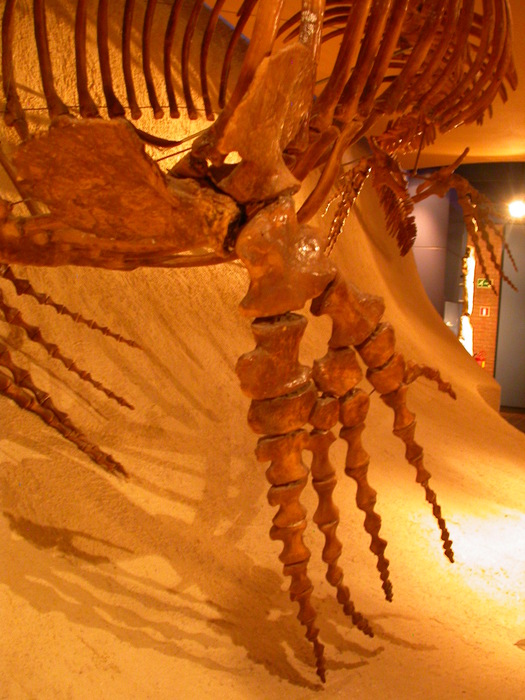
Mosasaurs were adapted to living entirely at sea. This is the front fin: either the scapula is divided or the clavicle has become flattened and as large as the scapula. The humerous is nearly square, as are the radius and ulna below it. We couldn't figure out if the "little finger" sticking off the back is a thumb or a pinkie.
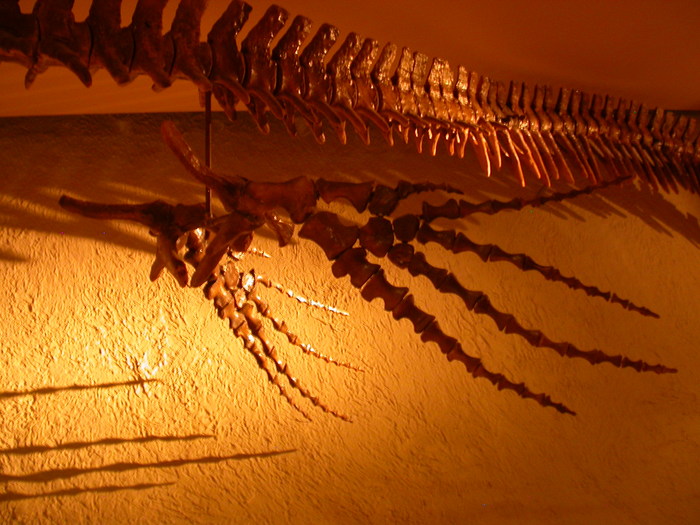
The pelvis is detached from the spine, and is very small relative to the rest of the body. Mosasaurs swam with an undulating motion, and may share ancestry with modern snakes. Certain similarities in the jaw also support this conclusion. They could not support themselves on land even to lay eggs; they gave birth to live young in the water. Probably most mosasaurs lived primarily on ammonites: shelled relatives of modern squids.
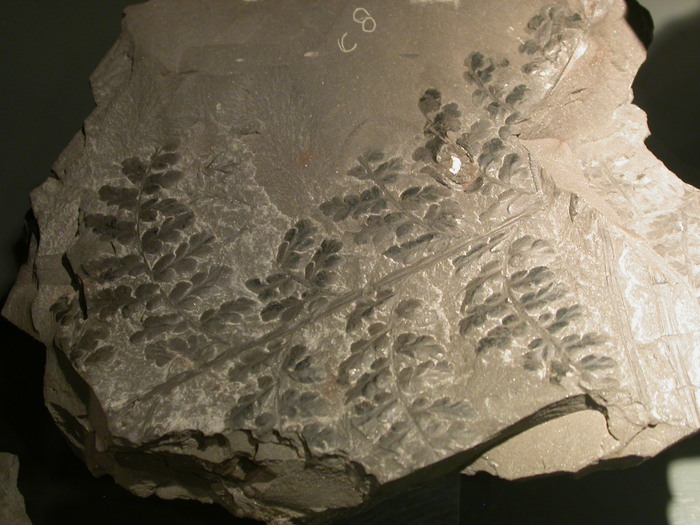
Fern fossils prove that this speices hasn't changed much. This looks much like some of the ferns that grew in my yard in Bellevue.
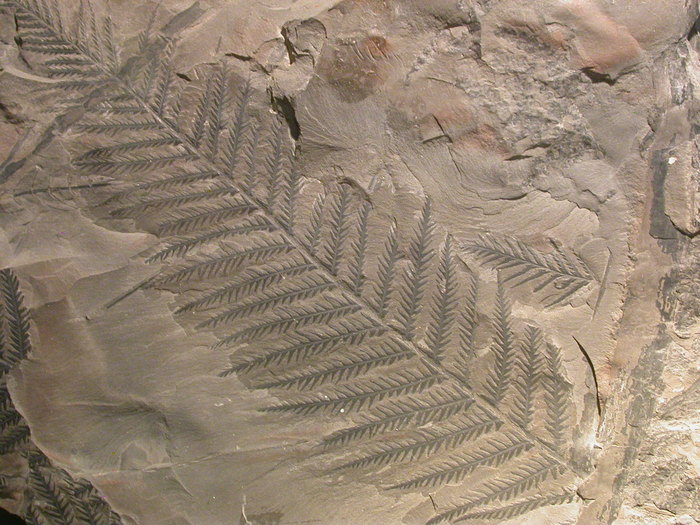
Of course you like ferns... you like fractals.
noted Robbert as I lagged behind, photographing the fossils. Maybe he's right, but I think it's more the other way around.
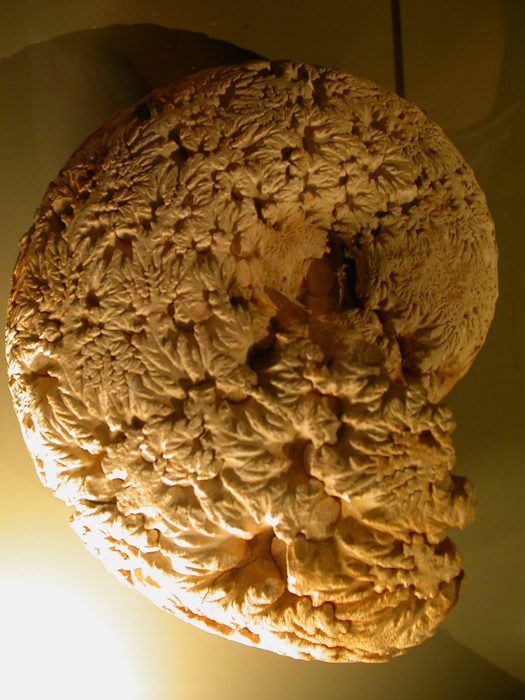
One of the aforementioned ammonites. Drawings of what ammonites looked like when alive are below. It is thought that they filled the chambers of their shells with air and floated along the surface, catching crustaceans and small fish.
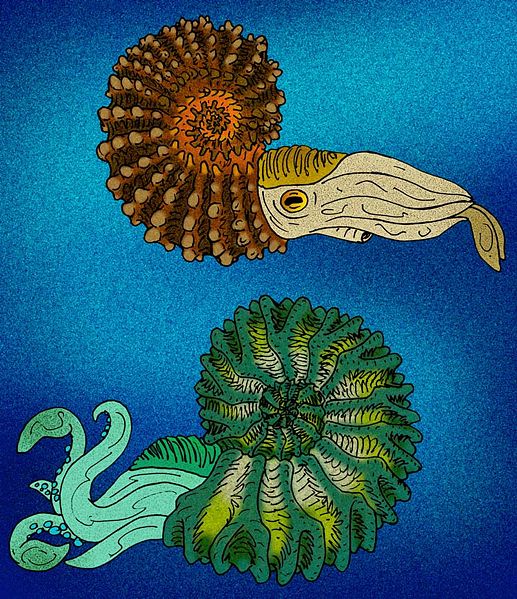
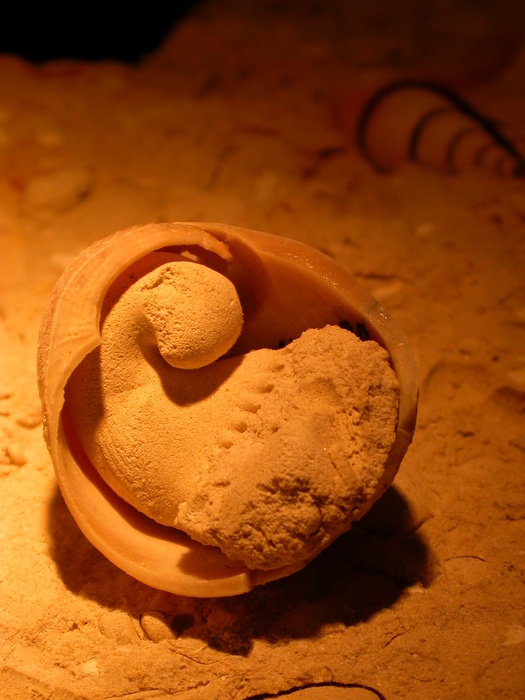
Fossilized inhabitant of a spiral shell. I'm not sure if most of the fossils were of the shells themselves or of mud that filled the inside (and the shells eventually decayed). An example is in the background.
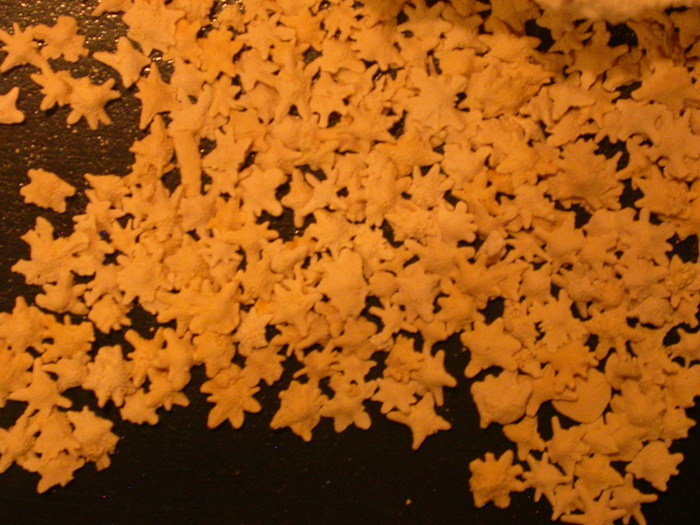
Fossil sterretjes
(little stars), which I think are Botryllus schlosseri (or, more likely, an ancestral species). These are a type of sea squirt that grows by budding
in these star-like patterns.
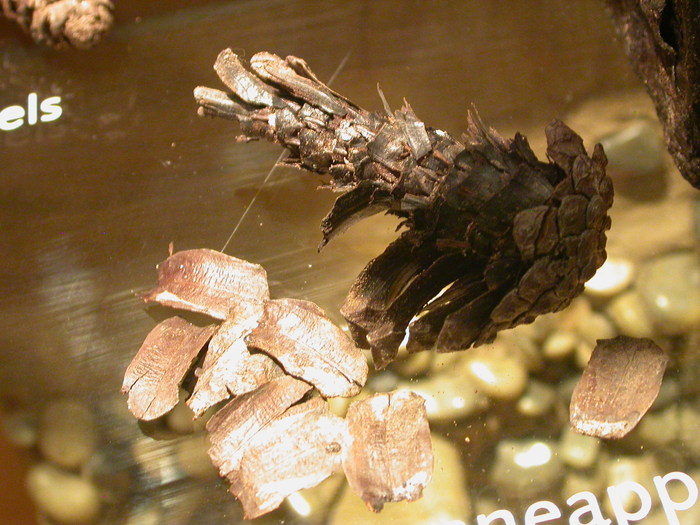
Up the stairs, and back on dry land. This fossilized conifer presents a very familiar sight to anyone in the Northwest. Presumably an ancestral Douglas Squirrel left the remains his ancestral fir cone lunch.
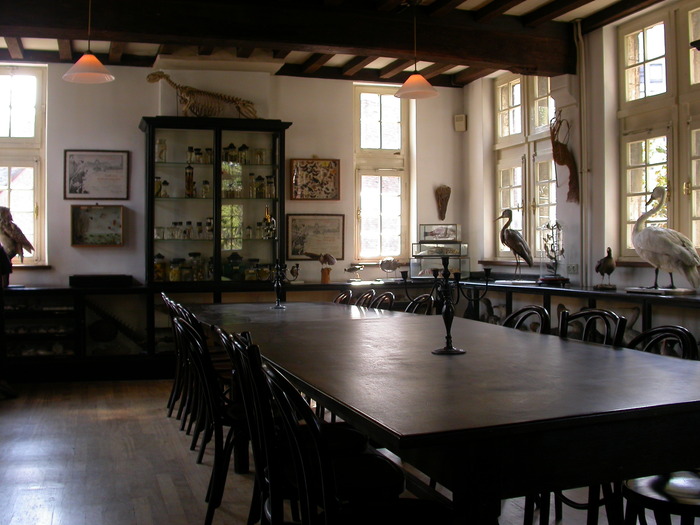
The back of the museum is the strangest. It exhibits the museum as it was when it first opened around the turn of the century. Then, musea were seen as a combination of a school and a freakshow. Exhibits consisted of models and taxidermied natural oddities.
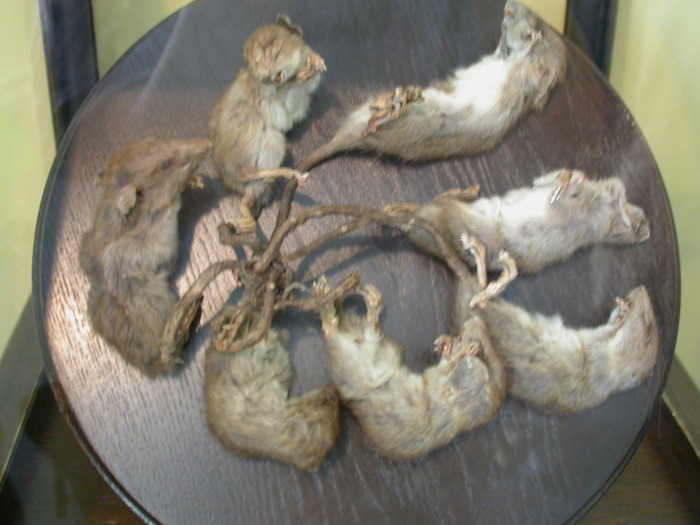
This is an example of a rattenkoning
(Rat King
): groups of rats with the tails knotted/grown together. There seems to be some disagreement as to whether this is a true natural phenomenon or a periodic hoax. Around 50 have been reported, mostly by people who had never heard of the phenomenon before. All confirmed cases have been in European black rats, with the exception of one in Java. The largest one found consisted of 32 rats. Xrays of one rat king show tail fractures within the tangled parts and calluses on the fractures, indicating that the rats survived some time in this state. It is not known how the rats come to be in this condition, although one author hypothesizes that the tails become tangled in something else (in one case, the tangle included horse hair; in another, the tails may have become frozen in wet sand while the rats slept) and become knotted as the rats climb over each other in panic. The most recent one was reported in Estonia in 2005.
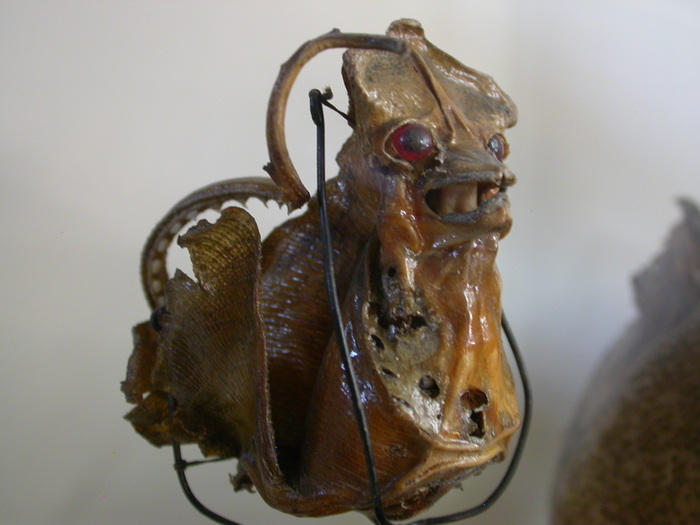
In with the taxidermied finches, dried butterflies, and pickled salamanders was this weird little thing. It had no label, and I have no guesses as to what it is. It was about the size of one of the black rats, around 10 or 15 cm long.